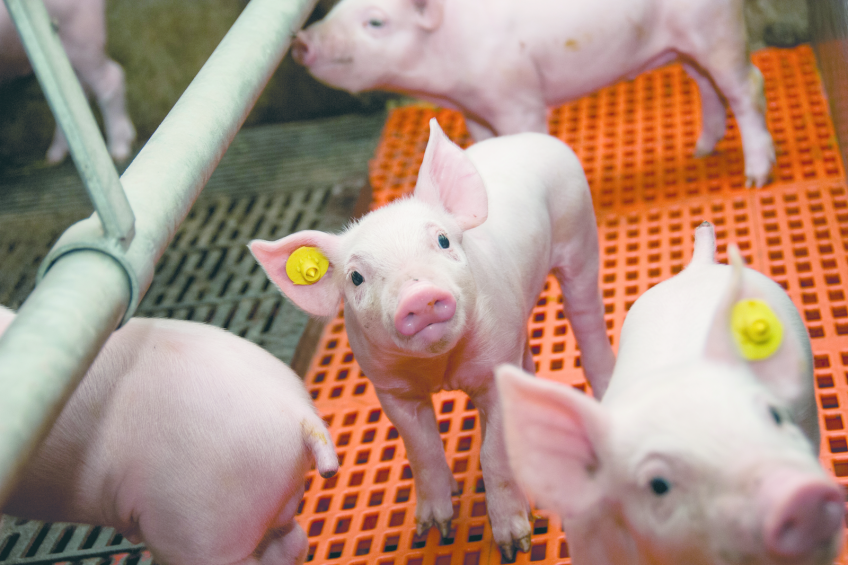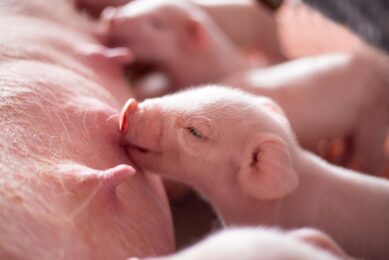All disease begins in the gut

Post-weaning gaps in piglets can easily take 7 to 10 days. Some well-managed farms, however, can contain this to 1 or 2 days. Knowing what is going on in a piglet’s gastro-intestinal tract is the first step towards gaining control of these problems.
Hippocrates, father of modern medicine, stated ‘All disease begins in the gut’, way back in 460-370 BC. That is still true to date. The gut is responsible for up to 80% of the immune system. Immunogloblin A (IgA) plays a very important role here and is produced and secreted in the digestive tract by the mucosal barrier that lines the intestine. Once this barrier becomes damaged, it impacts the ability to produce this extremely important antibody.
The ability to fight off all the harmful substances that enter the body is lost, leaving animals exposed to many kinds of infections. The gut is responsible for protection against toxins and pathogens including: harmful parasites, bacteria, virus, yeast and fungi. The gut is also responsible for proper digestion and absorption of nutrients needed to supply the entire body with the required building blocks for energy, growth and repair. An inflamed gut impairs the body’s ability to absorb nutrients which leads to great performance losses and extra costs.
The impact of weaning stressors
Weaning piglets from the sow is one of the most stressful periods in a piglet’s life, that results in intestinal, immunological and behavioural changes. Weaning stressors such as sudden separation from the sow, transportation or handling stress, feed changes, mingling with other piglets and pathogen exposure contribute to the problem at hand. A piglet has to adapt quickly to this stress in order to be productive and achieve good daily weight gains.
By the completion of the first week post-weaning, Metabolisable Energy (ME) intake is around 60-70% of pre-weaning milk intake and it takes approximately 2 weeks post-weaning to achieve full recovery to the pre-weaning ME intake levels, as Jean Le Dividich of the French National Institute for Agricultural Research (INRA) showed in 2001.
In 1999, a research group around Barbara McCracken, University of Illinois, USA, determined that low feed intake during the post-weaning phase may contribute to intestinal inflammation and seriously affect villi height and crypt depth, thus reducing body weight gains.
Typically, piglets lose 100-250 g body weight on the first day after weaning regardless of weaning age but are able to recover this loss in body weight by 4 days post-weaning. In 1992, a team around Dr Mike Tokach, Kansas State University, USA, reported that weight gain in the first week after weaning impacts the total number of days it takes to marketable weight of 110 kg. It is observed that when piglets gain more than 227 g/day during the first 7 days after weaning, days to market gets reduces by 6 to 10 days compared to piglets gaining 150 g/day or less in the first week. Thus, it is very critical to get piglets to eat and grow as soon as possible after weaning, by keeping inflammation under control.
In 1999, British pig expert, Dr Mike Varley investigated the relationship between average daily weight gain post-weaning and days required to reach slaughter weight in 5,000 piglets, showing that piglets that do not get off to a good start, never recover the lost performance. Although only a small percentage (2.5%) of the total feed consumed in a pig’s lifetime is eaten in the post-weaning period, it significantly impacts the daily gain to market weight by up to 30%.

Piglets are the future capital of every pig operation. Click here for a selection of articles focusing on all the aspects of raising healthy and proficient piglets.
Shortening the post-weaning gap
As a consequence, pig producers set up a number of strategies to make the post-weaning gap as short as possible. The average post-weaning gap duration is 7 to 10 days, while some of the best managed farms around the globe restrict it to 1 to 2 days. A saving of up to 7% in feed from weaning to slaughter can be obtained if one shortens the post-weaning gap.
Post-weaning, a piglet’s stomach is not used to solid feed and is relatively small. When a piglet overfeeds after a period of starvation, feed freely passes through the duodenum without being digested. Undigested feed becomes substrate for pathogens that could cause inflammation. Intestinal morphology gets affected at weaning, with villi becoming atrophied leading to poor feed absorption and making faeces more watery.
Adding to the situation, the immune system of the weaned piglet is immature. Although 2 week old piglets have an active immune response, their full potential is not reached until 8 weeks of age. Weaning induces harmful effects on the intestinal barrier function. The epithelium lining the intestinal lumen acts as the body’s first line of defence for protecting piglets from various harmful micro-organisms, mycotoxins, bacterial endotoxins and various feed antigens. When this intestinal barrier is disrupted, it results in increased permeability that allows toxins, bacteria or feed associated antigens to cross the epithelium thereby causing inflammation, mal-absorption, diarrhoea and reduced daily weight gains.
Inflammation reduces piglet performance
One of the immunological responses that happen during the weaning process are alternations in pro-inflammatory cytokines. Pro-inflammatory cytokines have an influence on intestinal integrity and epithelial function as it relates to permeability and transport of nutrients.
In 2004, a research group around Sandrine Pié, INRA, France, evaluated gene expression of pro-inflammatory cytokines during the weaning process, and found increased levels of them. Such up-regulation of genes of pro-inflammatory cytokines could contribute to functional disorders, resulting in reduced growth performance and contributing to post-weaning diarrhoea. Pro-inflammatory cytokines regulate both immune function and growth processes.
In 1997, Iowa State researcher Noel Williams and his team showed that when the immune system is activated, growth, feed intake, feed efficiency and muscle deposition gets reduced. Therefore, reduction of post-weaning stress that induces an inflammatory immune response is very critical for improving weaning to market body weights. Thus, one needs to invest in making high quality starter feeds that reduce the risk of inflammation in the gut, so the nutrients can be used for piglet growth.

Pathogens & Prevention: Here you can find articles on biosecurity and strategies to minimise the effect of pathogens in the pig house.
Exogenous butyrate inclusion
To counter or reduce negative effects associated with weaning and pro-inflammatory cytokine activation, short-chain fatty acid such as butyric acid play an important role. Butyric acid plays an important role in improving intestinal health and modulating intestinal inflammation. The beneficial effect of butyric acid is closely correlated with increased proliferation and decreased apoptosis of enterocytes.
For decades, butyric acid has been used in the feed industry to improve gut health and animal performance. Several new generations have been introduced to improve the handling of the product and its performance since the first trials were done in the 1980s. Today, tributyrins (ProPhorce SR) offer the most optimal alternative; delivering very high levels of butyric acid at intestinal level, without the negative handling characteristics conventional salts have. As a tool to increase the health status in the gut, they might help feed producers to reduce inflammation related problems in piglets. In the end, this will increase piglet performance and with that farmers profit.
Investing in weaning
Improvements in the weaning process can be made in many ways. Weaning is the most crucial time in swine rearing, and it pays to treat it as such and to optimise it where possible. Piglets with a strong immune system grow up fast and keep veterinary expenses limited. This effect will last much longer than the nursery phase alone. At the end the costs per slaughtered pig will be lower, if the health and performance of the weaned pig are kept at an optimal level.











